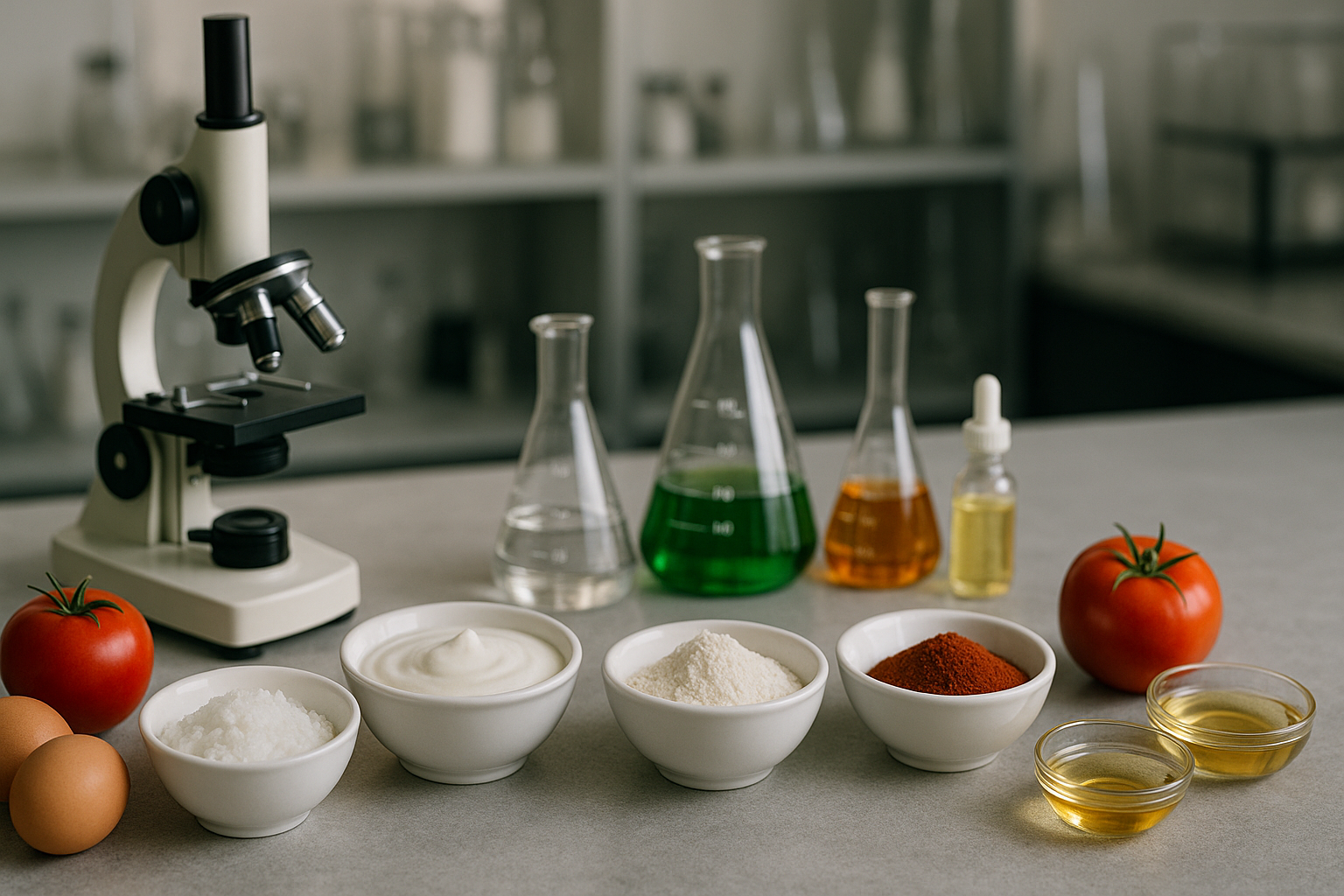
Agar Agar: The Plant-Based Gelling Agent Transforming Modern and Traditional Cooking
SUBSCRIBE TO OUR BLOG
Promotions, new products, and recipes.
Agar agar’s use is rising alongside plant-based cooking, with the global agar market valued around $288 million in 2024 and forecast to grow ~4–5 % annually through 2032 (Market Research Future 2024). Plant-based gelatin alternatives now account for roughly 61 % of the gelatin-substitute category (Straits Research 2024).
Agar is broadly used—from jellies and puddings to soups and sauces—with references noting its role across confectionery, dairy, canned meats and fish, and clarifying stocks (FAO Tech Manual). As a plant-derived hydrocolloid from red algae, it serves as a vegan gelatin alternative, and rising global Gracilaria production supports its broader use (Marine Agronomy Manual). Long-established in Asian cooking (known as kanten), agar creates clean, firm gels for sweets like yokan and modern “raindrop cakes” (Japan Times 2023). It’s now easy to find in Whole Foods, Walmart, and Amazon, reflecting its mainstream acceptance.
How Is Agar Agar Made
Agar is extracted from red seaweeds such as Gracilaria and Gelidium. The seaweed is boiled in water with mild acid to release polysaccharides, then filtered, gelled, frozen/thawed to dehydrate, and finally dried and milled into flakes or powder (FAO; CyberColloids).
Modern producers use mechanical pressing and controlled drying to standardize gel strength and moisture (Hispanagar Technical Notes 2024).
Is Agar-Agar the Same as Gelatin?
No. Gelatin comes from animal collagen; agar is a polysaccharide composed mainly of agarose and agaropectin from seaweed (Wikipedia Agar entry).
Agar sets at ~32–40 °C and melts only above 85 °C—creating a wide hysteresis gap that makes it stable in warm conditions (Science of Cooking).
Because agar is far stronger, recipes typically use 1 teaspoon agar powder ≈ 8 teaspoons gelatin (Ingreland 2024).
Can Agar Agar Replace Pectin?
In many recipes, yes—but results differ. Pectin gives soft, elastic gels dependent on sugar and acid; agar yields firmer, brittle gels independent of sugar content (Ginobiotech 2024).
Research blending agar with plant pectins shows tunable textures: adding fireweed pectin to agar reduced hardness ~41 % in one controlled test (PMC 9689380 2022).
Thus agar can substitute pectin in many fruit gels or jams but alters mouthfeel and clarity.
How Much Agar Agar to Use
General culinary ratio: 1 tsp agar powder (≈ 3 g) per cup liquid, or 1 Tbsp flakes per cup (DrAxe Nutrition Guide).
Since agar forms much firmer gels, less is required compared with gelatin—again, about an 8:1 strength difference (Ingreland 2024).
Minor concentration changes (±0.1 %) can substantially alter gel stiffness, a key property exploited in professional food formulation.
Can Agar Agar Be Remelted?
Yes. Agar gels are thermally reversible—melting above ≈ 85 °C and re-gelling upon cooling below ≈ 40 °C (Science of Cooking).
However, repeated melting and cooling may slightly weaken gel strength or introduce air bubbles, especially in sugar-rich mixtures (a general hydrocolloid effect noted in Food Hydrocolloids Research 2023).
Is Agar-Agar Good for Health?
Potential Benefits
-
Agar is ~80 % fiber and indigestible, acting as a bulking agent that can improve bowel regularity (WebMD Supplements).
-
A 2020 review identified antioxidant, anti-inflammatory, and anti-obesity activity in agar polysaccharides (PMC 6941718).
-
In a 12-week human trial, agar-based “Slim Kanten” supplement reduced BMI and fasting glucose among adults with type 2 diabetes (RxList Clinical Summary).
Cautions
-
Possible side effects: bloating, diarrhea, or cramps if overconsumed (DrAxe 2024).
-
Because it swells in water, risk of blockage exists for those with swallowing difficulties or bowel strictures (WebMD 2024).
-
Limited data exist on pregnancy safety; moderate culinary use is considered low-risk.
What Is Agar-Agar Made Of?
Agar consists of roughly 70 % agarose and 30 % agaropectin, complex polysaccharides built from galactose units (Wikipedia Agar).
The seaweed source affects sulfate and pyruvate content, which in turn influence gel strength and clarity (Marine Agronomy Manual).
It is nondigestible in the small intestine, functioning similarly to soluble fiber (WebMD).
Who Should Not Eat Agar-Agar?
Those with esophageal narrowing, GI obstruction, or difficulty swallowing should avoid taking agar dry or without plenty of liquid (WebMD).
People allergic to seaweed or marine products should avoid it (DrAxe).
Excessive intake may cause loose stools or flatulence, and anyone with intestinal strictures should seek medical advice before high-fiber supplements.
Agar Agar FAQ
Does agar require refrigeration to set?
No—it gels once cooled below ~40 °C and remains solid at room temperature (Science of Cooking).
Can agar gel in acidic liquids?
Yes, though very strong acid weakens gels; mixing agar before acid addition helps maintain structure (Science of Cooking).
How fast does it set?
Within 30–60 minutes depending on temperature and concentration (typical culinary data).
Can it be frozen?
Freezing disrupts the gel matrix and can cause water release (syneresis), so freezing is not advised (FAO Manual).
Does it affect flavor or color?
Pure agar is nearly colorless and tasteless, leaving flavors unchanged (Wikipedia Agar).
Can agar combine with other gums?
Yes—blends with xanthan, locust bean, or carrageenan modify texture and reduce brittleness (ScienceDirect 2023).

|
About the Author Ed is the founder of Cape Crystal Brands, editor of the Beginner’s Guide to Hydrocolloids, and a passionate advocate for making food science accessible to all. Discover premium ingredients, expert resources, and free formulation tools at capecrystalbrands.com/tools. — Ed |
Enjoyed this post? Subscribe to The Crystal Scoop
Food-science tips, ingredient know-how, and recipes. No spam—unsubscribe anytime.
- Choosing a selection results in a full page refresh.



